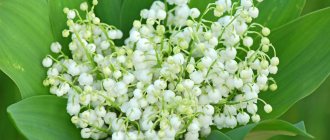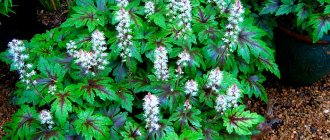Description of the plant
Sweet peas are popularly called sweet peas. This plant comes from the legume family; it has thin and long stems, up to 3 meters in height. The southwestern regions of Italy are considered the homeland of annual sweet peas. The domestication of the species occurred back in 1699.
Interesting!
One flower can consist of 12-15 inflorescences, all kinds of colors, ranging from white to purple-scarlet, violet, dark blue, yellow and almost black shades.
The root system is strong, growing annual sweet peas will not pose any difficulties, and gardeners value it for this. Flowering continues from the beginning of June until the first serious frost.
Planting sweet peas in the ground
What time to plant
Sweet pea seedlings are planted in open soil in the last days of May, after the soil has warmed up well and the return spring frosts have been left behind. If the plants being planted already have buds or flowers. they should all be removed, since after planting they must spend all their energy on forming the root system.
1.5 weeks before transplanting into the garden, seedlings need to start hardening off. To do this, the plant is transferred to fresh air every day; the duration of this procedure should be increased gradually until the sweet pea can stay outside around the clock.
Landing Features
The planting area should be sunny and well heated. Suitable soil for this plant should be moist, saturated with fertilizers, well drained, and its acidity should be 7.0–7.5.
Before planting, the area must be prepared. To do this, it is dug up to the depth of a spade bayonet, while humus or compost, as well as potash and phosphorus fertilizers, must be added to the soil. It is impossible to fertilize such a flower with fresh manure, as it can cause Fusarium wilt. It should also be noted that peas do not need nitrogen fertilizers.
Prepare holes for planting, the distance between them should be about 0.25 m. 2 or 3 bushes should be planted in 1 hole at once. If tall sweet peas are planted, then immediately after planting, supports must be installed near the bushes. Since this plant is grown in mid-latitudes as an annual, in the autumn the plant residues are destroyed, and it will be possible to plant peas in this area only after 4 or 5 years.
Classification by type
All varieties of annual sweet peas are divided into certain groups, each of which has a unique appearance, certain conditions for planting and caring for the plant.
Division by group:
- Spencer . This variety has a large number of branches and stems, their growth can reach 1.5-2 meters, it is distinguished by large inflorescences of 5-6 pieces with flounce-shaped edges. The period from planting the seeds of annual sweet peas to the appearance of the first flowers takes up to 3 months.
- Spencer - early . The inflorescences are medium in size, their height is 1.2-1.5 meters. After planting the seeds, 1.5-2 months pass before flowering begins. They are distinguished by smooth petals.
- Cartbertson is a floribunda . This culture is bred entirely in the image and likeness of the Spencer species, the only difference is that they bloom earlier and are more resistant to the scorching summer sun. Each inflorescence has 5-7 flowers.
- Galaxy . These varieties reach a height of 2 meters, their inflorescences are large and collected in the shape of a brush.
- Multiflora - Gigantea . Sweet pea with two stems, huge flowers, its height reaches 1.5 meters.
- Kni-hee . A low-growing variety of peas with a large number of thin stems and a height of no more than 1 meter, they have a bright inflorescence consisting of 5-6 flowers.
- Bijou . This species is even smaller in size compared to the previous one; such peas grow 0.5-0.7 meters in height. The inflorescences are small, consisting of 4-5 flowers.
- Cupid . A miniature form of annual sweet peas, grown from seeds, they are ideal for planting on a balcony, loggia or window.
- Mamut . Such varieties have powerful stems up to 2 meters high, large inflorescences and a quick flowering period of 1-1.5 months.
For reference!
Breeders have more than 1,000 varieties, which are grouped into 16 main groups based on size, flower color, stem length and other characteristics.
All varieties of sweet peas are good in their own way, so to speak, “for everyone.”
History of the fragrant rank
Before moving on to the topic of caring for and planting sweet perennial peas (a photo of it is presented in the article), we will look a little at the history of the plant. Its thickets can be found throughout Europe, South America, and some species can be found on the slopes of African mountains. They are fragrant gifts of nature. These plants, which reach a height of two meters, are bred mainly to decorate the garden plot.
The name of the plant in Latin is “latyrus odoratus”. “Odoratus” translates as “smell inhalation”, and the word “latyrus” was first used by the ancient Greek founder of botany, Theophrastus, and consists of two words: la – “very” and thoures – “attractive”.
There is an official version of the origin of this culture, which says that the English minister of religion, Francisco Cupani, more than three hundred years ago, while walking near the walls of his monastery located on the shores of the Mediterranean Sea, caught the pleasant smell of a plant unfamiliar to him.
In Russia in 1938, the Gribovskaya Experimental Breeding Station received several varieties of pea seeds from the English company Anwins, and a group of breeders under the leadership of Doctor of Agricultural Sciences Irina Dryagina began studying this crop. After 52 years, the first twenty varieties of domestic sweet peas appeared.
Perennial sweet peas (photo below), clinging with their tendrils to various supports, adorn the walls of balcony loggias and country houses. This is probably why the plant is popular among gardeners.
The reason for the demand for growing this type of plant is that pea flowers can tolerate spring and autumn frosts. Compared to other crops, which tend to twine around any support, fragrant china grows faster and has a long flowering period. Bouquets of flowers of different shades retain their freshness, smell and attractiveness for a long time. Some varieties of plants (low-growing) are used for flower beds.
Sweet peas can decorate any area
For your information! Currently, two-color varieties have also been developed, which are becoming increasingly popular.
Peas are a perennial, although in certain climatic conditions this fragrant flower is grown as an annual. In addition, thanks to the painstaking work of breeders, many annual varieties have appeared, which are represented by a more diverse range of colors.
Fragrant peas begin to bloom in late June - early July, but the duration of its flowering depends on how it is cared for. If you follow some simple rules, the plant will delight you with numerous flowers until frost.
Currently, two-color pea varieties have been developed
The stems of peas (peas) are ribbed, the leaves are complex, pinnate, and bright green. At the ends of the leaves there are tendrils, thanks to which the plant can curl, clinging to support. The height of this aromatic plant depends on what variety it is, and can vary from 15-20 cm to 2-2.5 m. The fruits of the tree are pubescent, not very long beans with several seeds.
Important! Sweet pea seeds are poisonous, so it is best to keep them away from children and animals.
Benefits of sweet pea over other flowers
Climbing annual decorative peas have a number of advantages, thanks to which summer residents and happy owners of flower beds love them so much; planting them in their flowerbeds will delight them with a riot of color, as in the photo.
Advantages:
- peas are an ideal option for landscape design; using them you can decorate not only a flower bed, but also the walls of a house, barn, gazebo and fence;
- the plant is not afraid of frost, “calmly” tolerates temperatures of 5 degrees below zero;
- Compared to other varieties of vines, sweet peas bloom very quickly;
- a large number of climbing stems creates islands of shade;
- long flowering period (at least 3 months);
- Growing annual sweet peas from seeds can be done in open ground, or in wooden boxes and pots;
- After cutting, it retains freshness for a long period.
The annual sweet pea is an unpretentious plant to plant and care for; in order for it to bloom, you just need to plant it without making any special effort.
Planting and growing annual sweet peas on the balcony
Iberis perennial flower - cultivation and care
Polka dot flowers look very beautiful in flowerpots and polymer flowerpots. Stems with colored buds can be tied to railings. To grow peas on a loggia, you can use the seed planting method.
Polka dots will serve as the best decoration for the loggia
Rules for preparing seeds
The key to successful pea breeding is the quality of the seed. To check germination, the grains are filled with water at a temperature of +50 degrees. Those that float are unusable.
Additional Information! It is recommended to pierce the grains with a needle before planting. Thanks to this, they will quickly absorb moisture and germinate.
Caring for Lathyrus Odoratus on the balcony is not difficult. It requires the following conditions:
- the right place - there should be no shadow, but you should also avoid direct sunlight;
- stable temperature without strong changes;
- proper watering;
- application of fertilizers 2 times a month, complex mineral preparations are used.
It is enough to water peas once a week, but in intense summer heat the frequency of watering increases.
China pleases with the magnificence and variety of its shades
Planting and care recommendations
Growing annual sweet peas from seeds is a natural method of propagation. Landing methods 2:
- transplanting;
- planting seeds in open ground.
Of these, preference is given to the second, since problems may arise when growing seedlings, and when transplanting into open ground, the root system and thin stems may be damaged.
Annual sweet peas (photo) do not require special planting and care conditions. All procedures are standard. The place for peas should be prepared in advance. Dig up the soil, add compost, phosphorus and potassium fertilizers to a depth of 15 cm.
Important!
Do not add nitrogen fertilizers or manure when planting.
The seeds should be soaked in boiling water and left to swell for a day. Floating seeds should be discarded; they are not suitable for planting. Place the rest on a cloth soaked in water and wait for them to sprout. Seedlings need to be hardened, periodically taking them to a cool place for 15-20 minutes.
Planting seeds and seedlings should be done in a shady, cool place so that the plant does not receive direct sunlight.
There is an opinion that planting annual sweet peas and subsequently caring for them is quite problematic. But if you comply with a number of necessary conditions, the process will turn out to be much more prosaic:
- seeds should be planted immediately in open ground, skipping the period of growing seedlings;
- The seeds of the plant have a very dense shell, so in order for them to germinate, gardeners use some tricks: soak the seeds, rub them with sandpaper, cut the shell;
- adult plants tend to break, they need to be planted along the fence, or vertical supports should be installed and long stems tied to them;
- The root system of the plant is powerful and goes deep into the ground, so it needs abundant and regular watering.
The question of when to start planting sweet peas (annual) cannot be answered unequivocally. Before you start planting seedlings, you should study in more detail the growing conditions of the selected pea variety, find out how it tolerates cold, the recommended temperature for seed germination, decide on the planting site and prepare it. Don’t delay planting seeds; sweet peas take a long time to germinate. And before the inflorescences bloom, at least 2-3 months must pass.
Note!
Peas love light, but cannot tolerate direct sunlight; they take away moisture from the plant. For planting, you should choose the southwest of the site.
The seeds are sown in April, placing them in peat pots or in May directly into open ground.
You may be interested in:
Annual dahlias: varieties, planting and care in open ground Annual dahlias are very beautiful and original flowers. In addition, they will delight their...Read more...
Growing sweet peas from seeds
Sowing
Sweet pea seeds are sown for seedlings in mid-March. The seeds germinate rather poorly, so they need to be prepared before sowing. To do this, they are immersed in water for 10–12 hours, or they can be kept for some time in a solution of Bud (per 1 liter of water from 1 to 2 grams), and its temperature should be 50 degrees. After this, they are placed in moistened sand, sawdust or gauze for germination, where they must remain at a temperature of 20 to 24 degrees for 2-4 days. As soon as the seeds sprout. they must be sown immediately. To sow seedlings, it is recommended to use ready-made soil mixture Rose or Saintpaulia, or you can also use a soil mixture consisting of peat, humus and turf soil (2:2:1). Whatever soil mixture you choose, it must be disinfected with a strong solution of potassium manganese. Pots or cups are used for sowing seeds. Seeds must be sown in moistened soil mixture. 2 or 3 seeds are placed in one container; they are buried into the soil mixture by 20–30 mm, no more. If sowing is done in a common box, then a distance of 80 mm should be maintained between the seeds. After the crops are watered, the containers must be covered with film on top, then they are placed on a well-lit windowsill in a warm place (from 18 to 22 degrees).
Growing seedlings
After the seedlings begin to appear en masse, as a rule, this happens 7–15 days after sowing, it is necessary to remove the cover from the containers, and also move them to a cooler place (from 15 to 16 degrees), thanks to which nodules will form on the roots, which fix nitrogen. The soil should always be slightly moist. It is recommended to place the seedlings on a southern windowsill; if this is not possible, then the plants should be provided with artificial lighting for 2 to 3 hours every day. Experienced gardeners recommend taking a fluorescent lamp or a phytolamp for this, which should be fixed at a height of 0.25 m above the seedlings. You can turn on such a lamp, for example, from 7 to 10 or from 17 to 20. To stimulate the growth of lateral shoots during the formation of the second or third true leaf plate, the seedlings should be pinched. Then the seedlings need to be fed, for this they use Kemira solution (2 grams per 1 liter of water).
Sweet pea
Feeding
Sweet peas are fed three times per season:
- Produced when the stems grow. Nitrophoska and urea in equal quantities (1 tablespoon each) are diluted in 10 liters of warm water.
- It is carried out starting from the appearance of the first flowers. A tablespoon of potassium sulfate and Agricola-7 fertilizer are diluted in a 10-liter bucket.
- It is carried out during the flowering period. To do this, dissolve a tablespoon of Rossa and Agricocola fertilizer for flowering plants in 10 liters of water. The mixture is consumed in the amount of 3-4 liters/1m2.
The plant is watered no more than once a week, but there should be a lot of water, 30 liters/m2. The most important thing is to know the “golden mean”, not to overwater or dry out the peas; they love abundant watering, but absolutely cannot tolerate waterlogging of the soil. During the season, it is recommended to loosen and weed the weeds around the plant at least 3-4 times.
You may be interested in:
Growing fragrant tobacco from seeds Despite the rather provocative name of this plant, we are talking about beautiful small flowers, which many...Read more...
Caring for sweet peas
Growing sweet peas in your garden is not difficult at all. Such a plant just needs to be watered, weeded, fed, tied to a support, loosened the surface of the site, and also protected from pests and diseases.
It is necessary to water the flower systematically, using a sufficient amount of water. Lack of moisture can cause buds and flowers to fall off, and this can also significantly shorten the flowering period. In dry summer time, when there is a minimum amount of rain, watering should be done once every 7 days, and approximately 3–3.5 buckets of water should be used per 1 square meter. In order for flowering to last longer, it is necessary to pick off the flowers almost immediately after they begin to fade.
Sweet peas, which are tall varieties, need support (mesh or twine). As the shoots grow, they should be directed in the most suitable direction, after which they are gartered.
To stimulate the growth of adventitious roots, it is necessary to hill up the bushes to a height of 50 to 70 mm, while adding nutritious soil to the base of the stem.
Such a flower can do without fertilizing, but experts still recommend fertilizing. At the very beginning of the growing season, the plant must be fed with the following nutrient mixture: take 1 large spoon of urea and Nitrophoska for 1 bucket of water. When the peas just bloom, they will need to be fed with a solution consisting of 1 bucket of water, in which 1 large spoon of potassium sulfate and Agricola is dissolved. And during the period of active flowering, fertilize with Rossa and Agricola for flowering plants (1 large spoon of each fertilizer per 10 liters of water).
There is no need to prune this plant.
Diseases and pests
Various types of aphids and root weevil can cause significant damage to sweet peas. At the very beginning of the growing season, the weevil gnaws out semicircles along the edges of leaf blades. At the same time, its larvae damage the root system, gnawing it. For preventive purposes against weevils, when planting seedlings in open ground, 100 milligrams of Chlorophos solution (0.1%) must be poured into prepared holes. The bushes themselves need to be treated with the same solution.
The following types of aphids can settle on a fragrant pot: chin, bean and pea. These sucking insects feed on the sap of the plant, as a result of which its organs become deformed. They are also carriers of dangerous viral diseases. To destroy such a pest, as well as for preventive purposes, the bushes during the growing season must be sprayed 2 or 3 times with Tsiram or Zineb, with a break between treatments of 15–20 days.
Sweet peas are susceptible to diseases such as ascochyta blight, powdery mildew, downy mildew, fusarium blight, root rot, blackleg, viral mosaic and deforming pea viral mosaic.
If brown spots with clearly defined boundaries have formed on the surface of the beans, leaf blades and shoots, this means that the bush is affected by ascochyta blight. It must be sprayed 2 or 3 times with Rogor's solution, and the distance between treatments should be 15–20 days.
In the second half of the summer, bushes can become infected with powdery mildew or downy mildew (downy mildew). In affected plants, a loose whitish coating forms on the surface of the shoots and foliage. As the disease develops, the leaf blades turn yellow, then they turn brown and fly off. To destroy pathogens, the foliage should be washed with a solution of colloidal sulfur (5%).
If the foliage begins to turn yellow and wither, this indicates that the plant is affected by fusarium. This disease is considered incurable, so diseased bushes must be removed from the soil and destroyed, and those plants that remain must be sprayed with a solution of TMDT. For preventive purposes, it is recommended to observe crop rotation.
If a bush is affected by root rot or black leg, then its roots and root collar become dark, and then the plant dies. Affected bushes cannot be cured, so they should be dug up and burned. It is necessary to replant the remaining healthy specimens, and in this case it is necessary to disinfect the root system of the flowers and soil.
When infected with a viral mosaic, a line pattern is formed on the surface of the leaf blades, and the upper parts of the affected stems become twisted and deformed. Viral diseases currently have no treatment; therefore, diseased bushes must be dug up and destroyed.
Sweet peas from sowing to flowering / Growing peas
Diseases, pests and methods of combating them
Peas are resistant to all diseases, the most common diseases being:
- blackleg;
- downy or powdery mildew;
- brown spots.
Some types of weevils and aphids can harm plant health.
Ways to help get rid of diseases:
- The procedure of spraying with the drug “Topaz” will help get rid of powdery and downy mildew (1 ampoule of the drug is diluted in 10 liters of water). Treatment can be carried out before and during flowering. Up to 1 liter of mixture is consumed per 8 m2.
- The drug “Hom” will help get rid of “color diseases” - black leg and brown spotting, at the rate of 40 g per 10 liters of water.
- The popular tablet “Iskra” will help in the fight against insect pests; one tablet per 10 liters of water will be enough. The prototype is “Fitoverm”, 2 ml of the drug is diluted with 1 liter of water. A liter of solution can treat an area of 10 m2.
Important!
To prolong flowering, you need to carry out pinching and remove dried flowers, leaving a small number of pods.
Don’t worry too much; diseases in this type of plant are extremely rare. They adapt perfectly to their environment.
Propagation by seeds and growing seedlings
Perennial sweet peas can be sown directly into the ground, but more often they are propagated by seedlings. Seed material is prepared in April. Seeds can be collected in your own garden or purchased in specialized stores. More often on sale are mixtures selected according to the height of the bush, but differing in the color and shape of the buds. If desired, you can also find varietal plants. You need to buy them from trusted suppliers who guarantee the authenticity and high quality of the seed.
Growing sweet peas from seeds is a very interesting and easy process that you can involve children in. With proper germination, failures are practically eliminated. First, the prepared material is sorted, rejecting ugly or too small specimens, the remaining ones are filled with hot water (temperature about 50 degrees). After a day, the floating hollow seeds are discarded and the liquid is drained from the glass. This procedure will help slightly soak the dense and hard shell and significantly increase germination.
The remaining specimens are placed in damp sand until seedlings appear. An alternative is to wrap the seed in a damp cloth, which must be constantly moistened. After pecking, the seeds are transplanted into previously prepared soil. Sweet peas prefer a light and nutritious substrate made from a mixture of garden soil, humus, sand and peat. Flowers can be grown in containers, but individual containers made of cardboard, plastic or peat are much more convenient. When replanting, the young plant is carefully removed from the cassette, the roots are not injured, and the flowers take root faster in the new location. Seedlings need to be watered with soft, settled water, preferably rainwater. No fertilizer is required; peas receive all the necessary nutrients from properly composed soil.
When the young seedlings grow to 15 cm, you can prepare them for moving to a permanent place in the garden or in balcony boxes. You should not delay replanting, as this may delay flowering. The best time to decorate flower beds is the beginning of May. Peas are not afraid of short-term night frosts. The earthen lump is carefully removed from the pot; you cannot shake off the soil from the roots or pull the seedlings by the stem. The plant is placed in a shallow hole and covered with soil. You should not bury it, as this may cause the stem to rot. After planting, the soil around is compacted with hands, and the plantings are watered with soft, settled water. When moved correctly, the plants quickly take root; flowering begins in the first ten days of July.
When to transplant seedlings into open ground
As soon as the ambient temperature stabilizes within 15 degrees, you can begin transplanting the seedlings. However, if the seedlings have already formed buds or flowers before planting, they will need to be removed. A week or two before planting in the soil, it is recommended to carry out hardening procedures so that the seedlings gradually get used to the outside temperature. Every day it is necessary to increase the duration of stay in the air. As soon as the young seedlings stand outside for a day, they can be transplanted into prepared soil.
Rules:
- Seedlings should be planted in holes at a distance of 25 cm from each other.
- For tall varieties, supports must be prepared.
- Annual varieties should be disposed of in the fall. It should be remembered that if you plant annual varieties, they can only be planted again after 5 years.
- Since the seedlings are still too sensitive and are not fully accustomed to changing ambient temperatures, it is advisable to protect them from the sun in the first few days. To do this, it is enough to build a canopy to protect the plants from ultraviolet rays.
As soon as the ambient temperature stabilizes within 15 degrees, you can begin to transplant the seedlings into open ground.
Kinds
China has wild and cultivated species. Many of them can be found in their natural environment in forests, fields, and on the edges.
Peas or sweet peas
Plant height is from 2 to 2.5 meters, peduncles are from 12 to 18 centimeters. The flowers are light pink, almost white. It has been studied by botanists since the 17th century. Inflorescences contain 4–9 flowers. The foliage is light green, pinnate, and ends in tendrils. Peas bloom in July and continue to bloom until the end of August. The seeds are golden brown.
Fragrant
Annual climbing plant. Grown as an ornamental plant. It reaches a height of almost 2 meters. Flowering begins in July and lasts 2 months. It takes root well in the middle zone and produces lush inflorescences of various colors.
Lesnaya
A perennial herbaceous plant, reaching a height of up to 2.5 meters. The leaves are lanceolate, the flowers are bright pink or purple. A branched plant that clings to neighboring plants and grows on forest edges, clearings, and next to bushes.
Sochevichnik spring
The plant is low, the leaves are single-pinnate, lanceolate, elongated. Common in deciduous forests. Flowering occurs at the end of May or beginning of June. Forms bright purple or pink inflorescences. After flowering, the petals do not fall off, but remain to form seeds.
Tuberous
Perennial, herbaceous plant. The leaves are wide. Lanceolate in shape with antennae. The crop blooms in June and until the end of August. The stem is branching, the flowers are bright red, with a characteristic pleasant smell. Chin is a weed plant that is common in grain fields.
Gmelin
The species reaches a height of up to 1.5 meters. The flowers are collected in inflorescences, at the beginning of flowering their color is light yellow, towards the end they become orange. Peas bloom for 2 months, starting from the end of June, then form brown fruits. The leaves are green, lanceolate.
Botanical description
The sweet pea flower, or sweet pea, was described by Carl Linnaeus in 1753. The root system of the plant is highly branched, taprooted, penetrating into the soil to a depth of one and a half meters. Like most legumes, sweet peas enter into symbiosis with nodule bacteria that absorb nitrogen from the air. The stems of the tree are climbing, weakly branched, they climb up the support, clinging to it with modified leaves - branched tendrils. Sweet pea flowers resemble moths, but the British think they are like a boat under a sail: the corolla consists of a large petal, similar to a wide oval sail, two side petals (“oars”) and two fused lower petals, forming a “boat.” Sweet peas bloom profusely. It begins in July and with proper care continues until frost. The fruits of sweet peas are small bivalve beans with 5-8 spherical, laterally compressed seeds of yellow, greenish or black-brown color, which remain viable for 6 to 8 years.
Rules for growing perennial plants
The seeds of perennial sweet peas, the photo of which is presented below, germinate slowly and for a very long time. There are 2 types of chin - broad-leaved and large-flowered, which can be planted in a private area and admire this climbing plant for a long time. Broadleaf has a large mass of leaves and is used in agriculture as a fodder crop. She has faded dirty pink flowers and they have no scent. The large-flowered chin belongs to the decorative climbing plants; it blooms profusely with large flowers of pastel colors without a smell.
To obtain perennial seedlings, the seeds are soaked in early February and sown in light nutrient soil under a film to create a greenhouse effect and prevent the soil from drying out. After the emergence of full shoots, the film is removed and the plants are fed with nitrogen for active growth. To do this, take 1 g of saltpeter per liter of water and quickly shed the soil so as not to burn the roots. After the formation of 2-3 true leaves, the plant begins to harden and after the end of frost it is planted in the ground. Such early planting allows the bush to get stronger in the first year of its life over the summer and strengthen the root system. During the first season, a poorly growing plant can be watered with a nitrogen solution at the rate of 1 s. l. for 10 liters of water.
https://youtube.com/watch?v=EiarillLMh1c
Perennial sweet peas, which can be planted on the south or west side of a building, love bright light and a lot of moisture. The chosen place can be slightly shaded, then the vines will grow more actively to reach a place actively illuminated by the sun.
The lashes need good support, so a special wall is created for the bed from any kind of mesh materials so that the lashes of the plant do not wrinkle or rot.
Grilles of open gazebos, pergolas, verandas and other temporary buildings located on the site are suitable as supports. Everything that you want to hide from prying eyes in the summer and decorate with light flowers can be hidden under the rank of a perennial.
You should not expect wild flowering in the first year of life from a perennial plant. First, a small bush grows from a pea, and it can be transplanted to a permanent place at the end of summer or next spring. The plant overwinters well, and, gradually increasing its root system, every year it grows flowering vines in the summer.
In order for the plant to comfortably overwinter, its vines are cut off at the root, and the growing area is covered with sawdust or covered with corrugated cardboard. These two types of shelter will prevent the ground from thawing during short-term winter thaws.
The perennial differs from annual sweet pea varieties in that its flowers have no aroma and the color of their petals is paler. A mature bush looks very beautiful and blooms from mid-June until the first frost.
Caring for seedlings at home
After sowing, the plant needs careful care. And therefore, compliance with all measures and rules provides a favorable environment for growth. Sprouts appear a few weeks after planting. Nodules begin to form with a slight temperature difference, so the seedlings are transferred to a cooler room and the cover is removed. The temperature should be from +15 to +17 degrees.
Some tips:
- It is advisable to place the seedlings on the south side so that the plant does not feel the lack of light. If there is not enough natural light, then you need to use artificial lighting for 2-3 hours every day.
- The soil should be constantly moist, so it is advisable to water it every week. To prevent drying out, you can cover the seedlings.
- Monitor the amount of water, because if you water too often, the roots may rot.
As for picking, the answer is simple. Not recommended!
Due to the fact that it is very sensitive, picking should be out of the question. Any manipulations carried out with its roots can lead to injury, so it is better not to touch the root system.
But feeding won't hurt. In this case, mineral fertilizers are perfect. Kemira solution has a beneficial effect on growth.
When the first three leaves appear, pinch the top to increase the shoots.
With proper and timely care and compliance with all rules, you can easily achieve favorable results. And after that, feel free to move on to the next part: planting in open ground.
When the first three leaves appear, pinch the top to increase shoots
Types and popular varieties of sweet peas with photos
The sweet pea culture has more than 1,000 varieties, which are distributed into 10 groups. They all differ in color, shape, and height. However, not all groups and varieties have found their recognition among gardeners. The most popular groups are:
Galaxy Group
Neptune
This includes late-flowering varieties bred in the late 50s of the last century. The plants are distinguished by powerful inflorescences, but their height is very large - 2 m. Flowers are corrugated, double 50 mm. Peas are used for landscaping and cutting.
The most popular varieties:
- Milky Way . Delicate cream flowers have a strong scent. There are 5-6 flowers in the inflorescence.
- Neptune . Straight powerful peduncles contain 7 blue flowers with often a white base.
Spencer Group
Charlotte
This includes multi-stemmed varieties that reach 2 meters in height. The brushes contain 3-4 corrugated simple or double flowers with wavy petals with a diameter of 5 cm. All varieties are medium flowering, suitable for cutting and landscaping. The best ones:
- Charlotte. The flowers are a rich crimson color with widely spaced oars and a wavy sail.
- Jumbo . The salmon pink flowers have a white boat and wavy sail.
Cuthbertson-Floribunda Group
White Pearl
Tall bushes with powerful inflorescences have 6 large corrugated flowers. A group of early flowering plants was formed in America. Among the popular varieties are:
- Kenneth grows to a height of 1 meter. Large dark red flowers on stiff peduncles have a slightly corrugated sail.
- White Pearl has peduncles up to 30 cm long, and the flowers located on them are painted white.
Lel Group
Lucien
Is an intermediate group with bushes up to 1 m tall. Powerful inflorescences contain 12 corrugated flowers.
Representatives:
- Lisette . The rich red inflorescences exude a truly magical aroma.
- Lucien . The pink flowers of this pea have a strong scent.
Rufled Group
Grace
Sweet peas in this group have very strong stems. The inflorescences consist of 6-10 rather large flowers with long and powerful peduncles and a wavy sail.
Flower growers prefer the following varieties:
- Ramona . The bush is 1.3 m long and has rigid peduncles. Flowers of rich carmine color have a white tongue.
- Grace . The one and a half meter bush as part of the inflorescences contains fragrant pale lilac flowers with dark veins.
Other equally popular groups are:
- Royal Family. A group of heat-resistant flowers, formed in 1964. All included varieties are improved from the Cuthbertson-Floribunda group. Large double flowers are colored depending on the variety. The pea group has a significant drawback: excessive sensitivity to daylight. Sweet peas require additional lighting in winter.
- Multiflora of Gigantea . A group of early flowering varieties exceeds 2.5 meters in height. Powerful inflorescences are decorated with 12 corrugated flowers. The varieties are ideal for cutting.
- Intergen . Low-growing, early-flowering plants were bred in Russia. Small inflorescences contain simple flowers.
- Earley Spencer . Early flowering bushes grow up to one and a half meters in height. There are only 4 corrugated flowers per inflorescence.
- Cupido . One of the shortest groups, not exceeding a height of 0.3 meters. On very long inflorescences of 70 cm there are 2-3 small flowers. The group is used for landscaping.
- Bijou. Semi-dwarf late-flowering varieties rarely reach 45 cm in height. On powerful short inflorescences there are 4-5 corrugated flowers. This group is recommended for ridges and borders.
Royal Family
Breeders around the world never cease to create new types of sweet peas.
Deadlines for planting
When to plant annual sweet peas depends on the climate conditions in your region, as well as the plant variety. Different types have different frost resistance
.
The moment of disembarkation itself should not be postponed. The growing season of this flower is long - about two to three months. Therefore, the sooner you plant sweet peas, the sooner they will delight you with abundant flowering and a unique aroma.
In the mild climate of the subtropics
You can plant the plant in the ground in November.
In temperate
climates, it is best to plant sweet peas in early spring.
In harsh Russian winters
The planting dates are moving towards February. Only you need to plant it not in open ground, but in the form of seedlings. After the snow melts, the seedlings should be planted in a permanent place. Seeds are sown in open ground in late April-early May.
Description and characteristics of the plant
The second name of the culture is fragrant china. The shoots of the vine, depending on the variety, are 0.2-3.5 meters long. The root system goes 1.5 meters into the ground. Along the entire length of the shoots there are small leaves, as well as tendrils with which the vine clings to the support. Up to 7 delicate buds are formed on the racemose inflorescence of sweet pea. The flower is associated with a butterfly with rainbow wings. The petals of the buds can be colored white, pink, blue, purple, red. During flowering, a honey aroma emanates from the bushes.
The buds begin to bloom in July. Flowering lasts until frost. Perennial peas in mid-latitudes are cultivated as an annual plant. When the buds begin to dry, a seed pod will form. They can be collected, dried, and planted on the site next year.
Additional Information. The seeds of the crop are poisonous, so they need to be hidden from children.
Soil, fertilizing
Sweet peas grow well in fertile soil that is not supplemented with fresh organic fertilizers. In order for the plant to feel great on the balcony, it needs to be planted in deeper containers. And everything is done to ensure that the growing root system develops correctly.
Poorly fertilized soil negatively affects the flowering of annuals. If the soil is fertilized above the norm, then an increase in green mass occurs. Flowering occurs later than always, the number of flowers is small. There are practically no seeds.
The plant needs to be fed and watered regularly. As a top dressing, it is recommended to use mineral fertilizers that have a low nitrogen content.
Seedlings planted on the ground receive their first feeding after a week. To do this, you will need a bucket of water with urea and nitrophoska dissolved in it. One tablespoon of urea and nitrophoska per bucket of water is enough. The flower will need a second feeding when it begins to bloom. The third feeding is during the period of vigorous flowering.
Know! Thanks to feeding, the annual will delight you with its blooms all summer long.
Most leguminous plants have a beneficial effect on soil fertility. These include the fragrant china. In the process of decomposition of the remains of the root system, the soil is enriched with nitrogen. Thus, the plant is able to provide itself with nitrogen. It is not recommended to plant sweet peas in one place for more than two years in a row. Experts say that it will not bloom beautifully.











